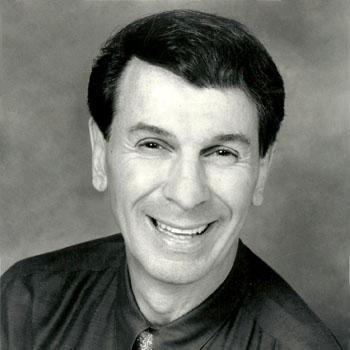Featured Artist: Freddy Cannon

Over the course of his hit-making career, this month's featured artist racked up an impressive 29 charting singles. His first hit zipped up the charts to No. 6 in 1959 and was quickly followed up with a No. 3 smash. But this early rocker is best known for his 1962 hit that was initially titled "Amusement Park" before being renamed "Palisades Park." Meet this month's featured artist.
It’s the week of May 18, 1959: The #1 single in America is Wilbert Harrison’s “Kansas City,” the grittiest track in a Top 10 that includes “Kookie, Kookie (Lend Me Your Comb),” “The Battle Of New Orleans,” and “Pink Shoe Laces.” At #53 on Billboard magazine’s Hot 100 stands a platter called “Tallahassee Lassie” by one Freddy Cannon (née Picariello). The next week it bounds to #30. Three weeks later, it’s in the Top 10, the rockin-est record in that elite group.
Unlike “Dream Lover” or “Bobby Sox To Stockings” — two of “Tallahassee’s” companions in the Top 10 — there’s nothing soft about this sassy lass from F-L-A. From the opening rough-and-tumble rumble of stinging guitar notes and pounding drum beats, through a sock-’em stretch of Freddy’s in-your-face vocal (punctuated by yells and handclaps over a backing bed of locomotin’ ah-ooo’s) and into a fade of Cannon come-on’s, “Tallahassee” is, in Freddy’s words, “not pretty.”
The singer is on a righteous roll as he declares, “I’m not a teen idol, even though the magazines always characterized me that way. I’m a rock ‘n’ roll singer! My records were all hard rockin’ records that you could dance to. I never made anything cute.”
A stroll through Freddy’s 29 chart sides proves his point: every one of them rocks from beginning to end.
Unknown to most of Freddy’s fans, he had participated in a Top 30 pop and Top 10 R&B hit almost three years before his breakout single. “The G-Clefs were just starting out,” says the singer, “and I did some record hops with them around Boston. (Freddy was born in nearby Lynn.) They were rehearsing and they asked me if I could play some kind of a rhythm or solo. They used the same studio where I’d [eventually cut the demo of] ‘Tallahassee Lassie.’ I didn’t get paid anything, not one dime. I was just excited to be on the record! ‘Ka-Ding-Dong’ did really well for them.”
The following year, 1957, Freddy was back in the studio. “I had a vocal group called The Spindrifts [and we recorded] a song I wrote called ‘Cha Cha Doo.’ The other side was ‘Belinda.’ It was on Hot Records (No. 1000, also released on ABC-Paramount No. 9904 for you trivia buffs) and it sold 5,000 copies in Boston. Back in those days, that was a hit!”
Another year rolled around. Enter Freddy’s mother, Antoinette (the family called her Annette), with a poem she had written called “She’s My Rock and Roll Baby.” Asked to put some music to it, Freddy sat down with his guitar and came up with the soon-to-be-famous “Tallahassee Lassie” melody. In short time Freddy and his band — along with $35 from his mom for the session fee — were at Ace Recording Studios. Lacking a lead guitarist, Freddy paid five dollars to a pickup player who was hanging in the hallway to lay down a solo.
Against all odds, Freddy’s demo record reached the ears of legendary Bean Town disc jockey Arnie “Woo Woo” Ginsberg, who passed it along to Swan Records producers Frank Slay and Bob Crewe. Slay and Crewe had hit the big time in 1957 with a double-sided smash by The Rays, “Silhouette” and “Daddy Cool,” and had struck again in 1958 with “La Dee Dah” and “Lucky Ladybug” by Billy & Lillie.
Hearing the same hit promise in Freddy’s demo, the two reworked some of the lyrics and renamed it “Tallahassee Lassie.” In the studio, Crewe suggested that Freddy fill the holes in the arrangement with “woo’s” and added some of his own, as well as banging on a high school marching band bass drum with a mallet to create the record’s signature “boom-boom” beat. Released in April of 1959, by the end of June Freddy’s “Tallahassee Lassie” was #6 in the nation.
With a certified self-penned smash to his credit, Freddy expected that he’d get to record some of his other “garage rock ‘n’ roll songs.” Slay and Crewe had other ideas. “They were good producers,” says Freddy. “The only thing that bothered me is they never gave me the opportunity to show them any more songs. ‘Tallahassee Lassie’ was written by me and my mom, that’s how the thing started. But after that, they had their stuff.”
“Their stuff” included another Florida-themed tune, “Okefenokee.” Although it recycled some of the standout elements of “Tallahassee,” it stalled at #43.
For Freddy’s third Swan single, Slay and Crewe went way down yonder again and way back when, resurrecting a song from 1922. To Freddy’s dismay, “Way Down Yonder In New Orleans” wasn’t even rock ‘n’ roll; it was the sort of tune that his trumpet-playing dad and his band played. In the studio Freddy gamely gave the tune his all and was rewarded with a #3 smash Stateside and in the UK.
Such success led to further campy revivals, including “Chattanooga Shoe Shine Boy” and “Muskrat Ramble,” interspersed with Crewe/Slay songs in a similar swinging vein. Among all of these pop-styled efforts was one that Freddy names as his second-most-favorite record after “Tallahassee Lassie:” “Buzz-Buzz-A-Diddle-It.”
“I was going to a record hop in Hartford with Bernie Binnick [co-owner] of Swan Records,” recalls Freddy. “We went into the school yard and there must have been 2,000 kids [listening to] a live band playing inside. We could hear them through the windows, playing this rhythm that you hear on the record. No singing. And I said, ‘Oh my God, what a sound.’ ”
“Bernie talked to the kids [in the band] and told them we’d like for them to come to Philadelphia to record and they did. Bernie, Slay, Crewe and I sat down in the office at Swan and wrote these lyrics, even though on the record label it just lists Frank Slay and Bob Crewe. It’s the same old story but I like for everyone to know.”
When “Buzz Buzz” stalled at #54 in early 1961, Slay and Crewe went back to bouncier big band arrangements for Freddy, none of which returned the singer to his “Tallahassee Lassie” heights.
By the spring of 1962, Freddy hadn’t had a Top 40 record in almost a year. One of Bernie’s friends approached him with a song he had written: a surefire hit for Dion, if Bernie could just get it to the singer. Once Bernie heard the song, a ditty called “Amusement Park,” he knew it was perfect for Freddy.
Bob Crewe changed the title to “Palisades Park:” a real-life attraction on the Hudson River in Northeast New Jersey. Powered by a funhouse organ plus thrilling roller coaster and excited crowd effects, the thing screamed hit! Except...Swan relegated it to the flip side of “June, July and August,” a manic Little Richard-styled number.
”Palisades Park” could not, would not, be stopped. When a deejay accidentally played the wrong side of Swan #4106, the song caught fire, roaring to #3 nationally during the first week of summer 1962. (As for the writer of “Palisades Park,” Chuck Barris moved over to television, where he created “The Dating Game,” “The Newlywed Game” and “The Gong Show.”)
Unfortunately, such success set the bar for subsequent singles exceptionally high, plus Crewe was now concentrating on a new act called The 4 Seasons. At its best, the hit record business is a fickle one, and FC’s follow-up records failed to measure up to “Palisades Park.” Still, Freddy had over four years of chart sides to his credit and Warner Brothers Records was willing to bet that he had a few more in him.
Indeed he did. “Bang! Right out of the box, the first record I cut — ‘Abigail Beecher’ — was a hit,” says Freddy.
Things were definitely looking up. There was just one minor problem. A month after “Abigail’s” peak, the top five slots on the Hot 100 were held down by one act: The Beatles. Freddy’s chart career, like that of just about every other pre-Fab Four American artist, went into a slump.
What Freddy needed was a bit of action and he got it courtesy of old friend Dick Clark. From his first time on American Bandstand in May of 1959, Freddy had been a mainstay on the show (and holds the record for most appearances on AB). Now Dick needed a theme song for his latest venture. “In 1965 Dick Clark sends a song over by Bobby Boyce and Steve Venet. I listened to it a couple of times and I said, ‘Yeah, I can sing this; it’s easy. Let’s go cut it.’ ”
Clark’s faith in Freddy was rewarded when “Action” reached lucky #13 in September, rubbing shoulders with such 1960s classics as “Help!,” “Like A Rolling Stone” and “I Got You Babe.”
Even though Freddy’s good time rock ‘n’ roll records resisted the tidal swell of cultural upheavals in the mid-to-late 1960s, those changes were washing away the remnants of pre-Beatles Top 40. Fittingly, his final Hot 100 hit — “The Dedication Song — was a look back at the golden era of AM radio.
Warner Brothers released its final FC single in 1967: a respectable rendition of The Doors’ “20th Century Fox.” In the end, singer and label parted ways, with WB transferring ownership of all of Freddy’s masters to him. “Little did they know what they were giving me,” says Freddy. “There are only five or six artists in the record business who own their own original masters and I’m one of them. How lucky can you be!”
Post-WB Freddy recorded for several labels; his last chart entry was in 1981, capping an amazing 22-year-run of Hot 100 singles.
Today, Freddy is still rockin’, a true believer in an age where posturing is often more important than the real deal. More importantly, he’s a happy man. Asked about the highpoint of his life, he unhesitatingly answers, “My wife. I’ve been married for 57 years and she’s been behind me all this time. She’s my biggest supporter.”
Freddy is as enthusiastic now as he was when he started performing over 50 years ago. Talking about the upcoming Malt Shop Memories Cruise, he says, “When I come out, people are ready to go: they want to dance, they’re ready to clap. A Freddy Cannon show is a party show and I want people to enjoy themselves.”
“My mom always said, ‘Son, you’re gonna do well,’ adds Freddy. “She and my father gave me a career and I’m very content now. I’ve been very lucky.” May fortune bless all of us in equal measure.
Ed Osborne © 2013
----
Ed Osborne has spent his life immersed in music. In radio he was a deejay at America’s #1 FM station where he was selected as a runner-up for Billboard prestigious Air Personality of the Year award. From there he moved over to management at a national radio ownership company. Later, as Executive Producer at BMG Special Products, he created thousands of music concepts and products for Fortune 500 corporations and direct-to-consumer companies. Today he’s a solopreneur, consulting with and acting as an on-camera representative for Time Life Music, producing CD reissues, and writing extensively about popular music.
